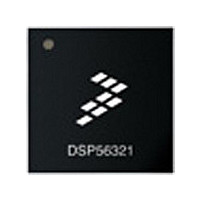XC56309VL100A Freescale Semiconductor, XC56309VL100A Datasheet - Page 170

XC56309VL100A
Manufacturer Part Number
XC56309VL100A
Description
IC DSP 24BIT 100MHZ 196-MAPBGA
Manufacturer
Freescale Semiconductor
Series
DSP563xxr
Type
Fixed Pointr
Specifications of XC56309VL100A
Interface
Host Interface, SSI, SCI
Clock Rate
100MHz
Non-volatile Memory
ROM (576 B)
On-chip Ram
24kB
Voltage - I/o
3.30V
Voltage - Core
3.30V
Operating Temperature
-40°C ~ 100°C
Mounting Type
Surface Mount
Package / Case
196-MAPBGA
Device Core Size
24b
Format
Fixed Point
Clock Freq (max)
100MHz
Mips
100
Device Input Clock Speed
100MHz
Ram Size
102KB
Operating Supply Voltage (typ)
3.3V
Operating Supply Voltage (min)
3V
Operating Supply Voltage (max)
3.6V
Operating Temp Range
-40C to 100C
Operating Temperature Classification
Industrial
Mounting
Surface Mount
Pin Count
196
Package Type
MA-BGA
Lead Free Status / RoHS Status
Lead free / RoHS Compliant
Available stocks
Company
Part Number
Manufacturer
Quantity
Price
Company:
Part Number:
XC56309VL100A
Manufacturer:
Freescale Semiconductor
Quantity:
10 000
Company:
Part Number:
XC56309VL100AR2
Manufacturer:
Freescale Semiconductor
Quantity:
10 000
- Current page: 170 of 284
- Download datasheet (4Mb)
Serial Communication Interface (SCI)
compatible with the MC68681 DUART, the M68HC11 SCI interface, and the Intel 8051 serial
interface.
8.1.1 Synchronous Mode
Synchronous mode (SCR[WD2–0]=000, Shift Register mode) handles serial-to-parallel and
parallel-to-serial conversions. In Synchronous mode, the clock is always common to the transmit
and receive shift registers. As a controller (synchronous master), the DSP puts out a clock on the
SCLK
RCM=0).
As a peripheral (synchronous slave), the DSP accepts an input clock from the
the slave mode, choose the external transmit and receive clocks (TCM and RCM=1). Since there
is no frame signal, if a clock is missed because of noise or any other reason, the receiver loses
synchronization with the data without any error signal being generated. You can detect an error
of this type with an error detecting protocol or with external circuitry such as a watchdog timer.
The simplest way to recover synchronization is to reset the SCI.
8.1.2 Asynchronous Mode
Asynchronous data uses a data format with embedded word sync, which allows an
unsynchronized data clock to be synchronized with the word if the clock rate and number of bits
per word is known. Thus, the clock can be generated by the receiver rather than requiring a
separate clock signal. The transmitter and receiver both use an internal clock that is 16 times the
data rate to allow the SCI to synchronize the data. The data format requires that each data byte
have an additional start bit and stop bit. Also, two of the word formats have a parity bit. The
Multidrop mode used when SCIs are on a common bus has an additional data type bit. The SCI
can operate in full-duplex or half-duplex modes since the transmitter and receiver are
independent.
8.1.3 Multidrop Mode
Multidrop is a special case of asynchronous data transfer. The key difference is that a protocol
allows networking transmitters and receivers on a single data-transmission line. Inter-processor
messages in a multidrop network typically begin with a destination address. All receivers check
for an address match at the start of each message. Receivers with no address match can ignore the
remainder of the message and use a wakeup mode to enable the receiver at the start of the next
message. Receivers with an address match can receive the message and optionally transmit an
acknowledgment to the sender. The particular message format and protocol used are determined
by the user’s software.
8-2
pin. To select master mode, choose the internal transmit and receive clocks (set TCM and
DSP56309 User’s Manual, Rev. 1
SCLK
Freescale Semiconductor
pin. To select
Related parts for XC56309VL100A
Image
Part Number
Description
Manufacturer
Datasheet
Request
R
Part Number:
Description:
Manufacturer:
Freescale Semiconductor, Inc
Datasheet:
Part Number:
Description:
Manufacturer:
Freescale Semiconductor, Inc
Datasheet:
Part Number:
Description:
Manufacturer:
Freescale Semiconductor, Inc
Datasheet:
Part Number:
Description:
Manufacturer:
Freescale Semiconductor, Inc
Datasheet:
Part Number:
Description:
Manufacturer:
Freescale Semiconductor, Inc
Datasheet:
Part Number:
Description:
Manufacturer:
Freescale Semiconductor, Inc
Datasheet:
Part Number:
Description:
Manufacturer:
Freescale Semiconductor, Inc
Datasheet:
Part Number:
Description:
Manufacturer:
Freescale Semiconductor, Inc
Datasheet:
Part Number:
Description:
Manufacturer:
Freescale Semiconductor, Inc
Datasheet:
Part Number:
Description:
Manufacturer:
Freescale Semiconductor, Inc
Datasheet:
Part Number:
Description:
Manufacturer:
Freescale Semiconductor, Inc
Datasheet:
Part Number:
Description:
Manufacturer:
Freescale Semiconductor, Inc
Datasheet:
Part Number:
Description:
Manufacturer:
Freescale Semiconductor, Inc
Datasheet:
Part Number:
Description:
Manufacturer:
Freescale Semiconductor, Inc
Datasheet:
Part Number:
Description:
Manufacturer:
Freescale Semiconductor, Inc
Datasheet:











